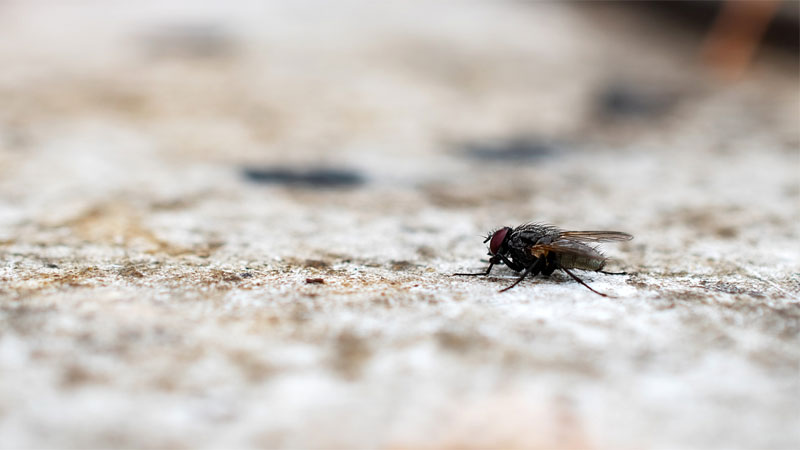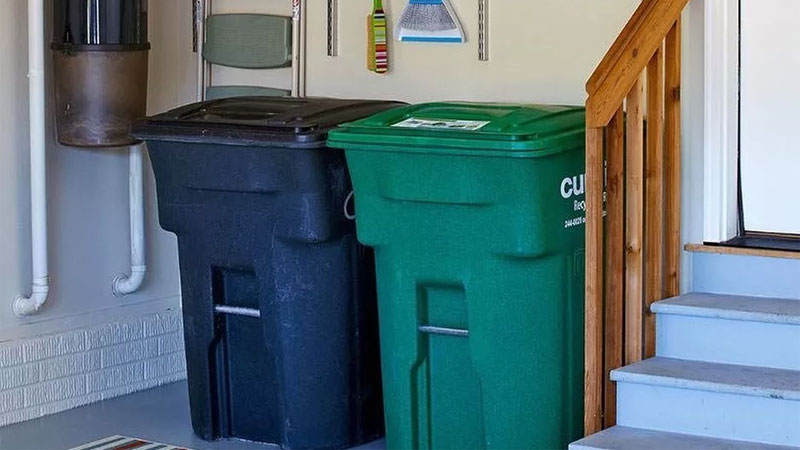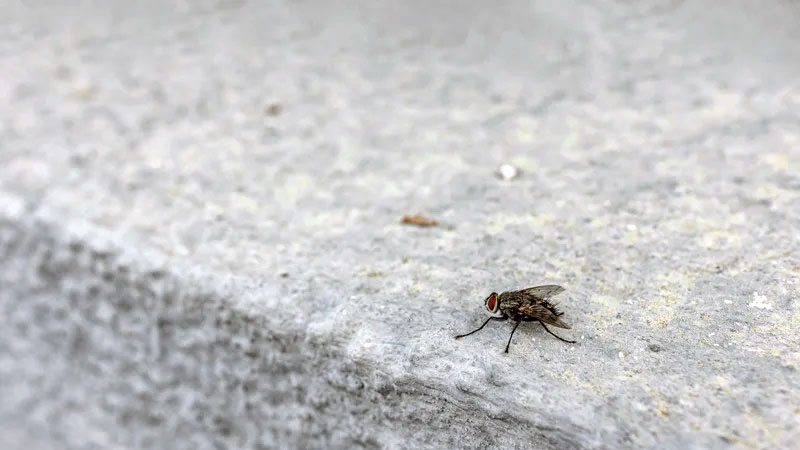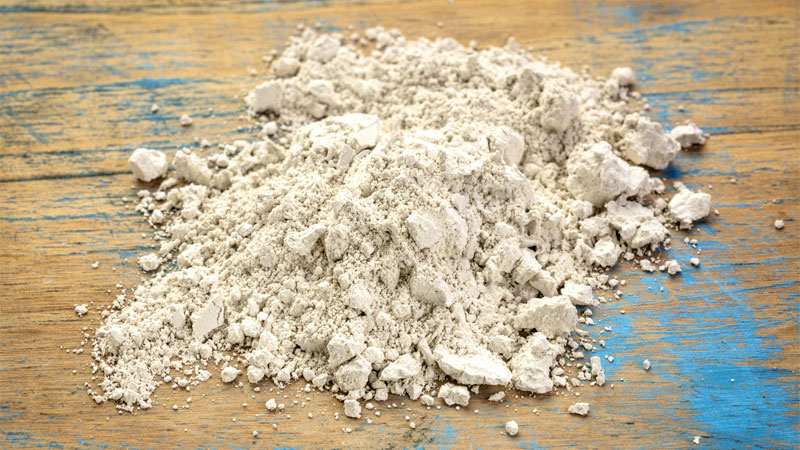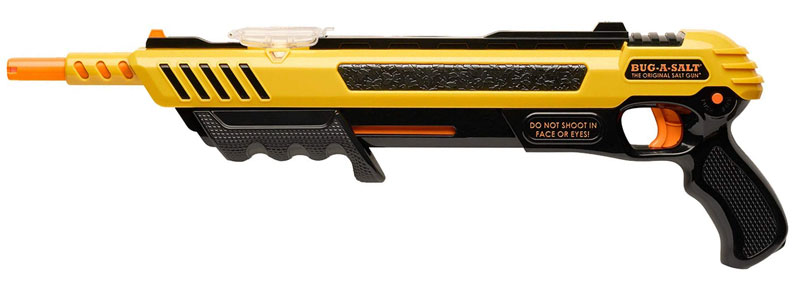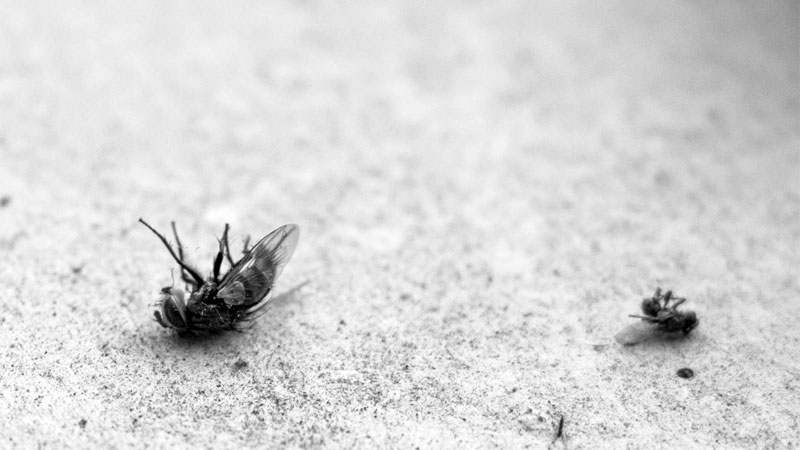It can happen at almost any time of the year. You open your garage door, step inside, and hear a familiar buzzing or little bits of dirt flying around. On the bright side, these aren’t bees or wasps. On the bad side, your garage is infested with flies.
So how do you get rid of flies in the garage, and how did they get there in the first place? Let’s take a deeper look at this common pest infestation.
Flies and Your Garage
Normally, you might associate flies with your kitchen or the patio on a hot summer’s day. But they can also appear in your garage for a number of reasons.
Different Flies Mean Different Things
Flies (mostly) play valuable roles in nature. One can break them down into four feeding groups:
- Decomposers – Most fly species aid in decomposition, such as house flies, drain flies, and fruit flies.
- Pollinators – Some species are valuable pollinators, such as hoverflies, horseflies, and fungus gnats.
- Vampires and Parasites – Blood meals are needed for reproduction in biting midges and horse flies, much like you find in fleas and bed bugs. However, only the females drink blood while the males prefer nectar.
- Oddballs – Cluster flies are notorious house pests, but adults can’t actually feed. Meanwhile their maggots are parasitic and feed on earthworms.
That said, you can have any of these types of flies appear in your garage. Identifying the fly can help you identify why it’s there based largely on their diet.
Points of Entry
Unless you’re a smartass scientist who’s bioengineered a fly that knows how to use an open window, there’s a good chance the flies simply wandered in through the open garage door or window and can’t figure out how to leave again.
Just as with your home, you’ll want to look for damaged window screens and other entry points where flies could easily crawl in.
However, there’s also the possibility you brought eggs into the garage by accident.
Breeding Grounds
Let’s say you’re in the garage working on a car or other project and get hungry. You go into the house and grab food that had been left on the kitchen counter. This food may be contaminated.
Adult flies are also known to lay eggs on food at the supermarket where they remain dormant in your refrigerator until the food’s left out.
Another major breeding ground is your garbage can. Flies are often attracted to sweet or other strong smells that resemble decay. Unfortunately, if you like to do mechanical or craft work in your garage, this can create spills or puddles of stagnant water that some flies will seek out to lay their eggs in.
Finally, the presence of other pests can result in fly infestations. Dead animals, such as that rat you poisoned or animal waste left behind by the bat or possum taking shelter from a big storm can be a veritable feast for many fly species.
Getting Rid of Flies in the Garage
Natural Methods
One of the big problems with flies invading your garage is that you can’t always keep the main door closed. This is especially true in summer when ventilation is essential as you work or go through storage containers.
Thankfully, there are plenty of all-natural ways to evict or kill flies.
Diatomaceous Earth and Boric Acid
Food grade diatomaceous earth (DE) is simply amazing. It’s a fine dust to humans, but is created from crushing the fossilized shells of microscopic diatoms.
Imagine your children dumping their Lego bricks all over the floor when you’re running around barefoot. The sharp edges of the broken shells cut through an insect’s protective wax coating. This allows moisture to escape and they die of dehydration.
Boric acid (usually in the form of Borax) is a common household product often used for homemade laundry soaps or cleaning. This substance is highly toxic to insects and will eat away at them from the outside. If they’re unlucky enough to ingest it, it’ll dissolve their insides.
Of the two, we prefer DE. It’s safe and non-toxic around humans and pets, although you probably don’t want to inhale it. Meanwhile, boric acid can harm children and pets, and was linked to serious developmental defects in Victorian era children. So if using boric acid, place it where there’s no easy access.
In both cases, you’ll need to add a fresh dusting every few days, and a stiff breeze might dislodge your microscopic minefield. Otherwise, these have an almost perfect kill rate (it can take a day or two for the victim to die, mind you).
Homemade Repellents
There are many organic items you have around the house that can be used to make effective repellent sprays against flies and other insects. Please note that your mileage may vary on these, so experiment to find what scent or combo works best for you.
For the spray base, take one cup of warm water and emulsify it by adding a few drops of Dawn dish soap. Insecticidal soap will also work.
Next, add a teaspoon of one or more of the following and put the mix in a spray bottle:
- Cayenne pepper
- Camphor oil
- Eucalyptus oil
- Lavender oil
- Lemongrass oil
- Peppermint oil
- Tea tree oil
Spray your mix around entryways or places flies like to hang out. It won’t kill them, but it can make them avoid that area or be used to encourage them to approach your traps.
A teaspoon of neem oil will kill flies if you hit them directly. You can also replace half of the water with isopropyl alcohol, which can dry out the fly.
Note that it’s best to skip any essential oils or other additives if using one of these ingredients. Also, they will ONLY work if you hit the fly directly.
Traps and Allies
There are many fun ways to actively kill flies as well.
Get an Insectivore
Frogs, lizards, spiders, and even carnivorous plants such as the Venus flytrap and pitcher plant all love to eat flies. There are even birds that will help out. Just remember that critter allies can become pests as well.
Hunting Season
For larger flies, just grab your Bug-A-Salt and have a blast. You don’t even need a hunting license! Standard or electric fly swatters are also a lot of fun to use.
Traps
You can buy or use sticky fly paper. They’re nothing more than sticky strips, usually on a clear or reflective material to attract flies. Regular cardboard cut in strips and coated with honey and a dusting of DE also works wonders. Just be sure kids and pets can’t get tangled up in them.
Alternatively, invest in a bug zapper. These electrocute the flies, which you can then feed to pets or carnivorous plants.
Of course, the most popular homemade fly trap is made with a small soda bottle and white vinegar. Simply cut the top of the bottle off where it starts to curve inwards. Turn the top over and tape it back in place to create a funnel.
Pour in an inch or so of white or apple cider vinegar (you can add a few drops of dish soap as well to make them drown).
The fly goes in looking for food and either drowns or starves because they can’t figure out how to get back out. This works best on smaller flies, but can also catch house flies and cluster flies.
Chemical Methods
Finally, you can always invest in chemical insecticides designed for flies. Pyrethrin-based sprays (like this one) work really well, but keep in mind these are toxic to humans and pets.
Always check to ensure flies are listed on the label before purchasing.
Preventing Garage Flies
Sometimes regular sightings of certain species of flies are normal where you live. Wetlands or near creeks or lakes are perfect breeding grounds for many flies. In such cases, you’ll want to set up some defenses so flies don’t try to come in.
Entry Points
Check all windows and doors, replacing any damaged screens or caulking. Also, screen any vents and fill any holes in the walls. There’s not much you can do for the garage door itself, sadly.
Removing the Food
Keep any garbage in airtight containers and seal compost bins with tight-fitting lids. Ideally, garbage cans and compost bins should be kept outside.
Keep your garage clean of spills, food waste, and debris. Regularly clean any drains with vinegar and baking soda to prevent drain flies.
Final Notes
Unlike inside your home, it’s impossible to completely bug-proof an active garage. However you can still do a lot to make this part of your property inhospitable or eliminate any flies that try to invade. Use multiple methods for maximum effectiveness year round.
- How to Get Rid of Hawks - March 8, 2024
- How to Get Rid of Pill Bugs (Rolly Pollies) - March 1, 2024
- How to Get Rid of Groundhogs (Woodchucks) - February 5, 2024


 Just tell me how to get rid of ’em.
Just tell me how to get rid of ’em.